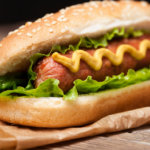One common question that arises is, “How many ounces are in a gallon?” This query not only touches on basic arithmetic but also delves into the differences between the US and UK measurement systems. Understanding measurements, especially volume conversions, is essential in various aspects of life, from cooking and grocery shopping to scientific experiments and educational contexts. Let’s explore this topic in detail to provide a clear understanding.
Basic Volume Conversions: Ounces to Gallons
The US System
In the United States, liquid measurements often follow the US customary system. Here’s the breakdown:
- 1 gallon = 4 quarts
- 1 quart = 2 pints
- 1 pint = 2 cups
- 1 cup = 8 fluid ounces
Using these conversions, you can determine how many ounces are in a gallon. Multiply the number of cups in a gallon by the number of ounces in a cup:
1 gallon=4 quarts × 2 pints per quart × 2 cups per pint × 8 ounces per cup
= 4 × 2 × 2 × 8
= 128 ounces
So, there are 128 fluid ounces in a US gallon.
The UK System
In the UK, the Imperial system is used, and the volume measurements differ slightly from those in the US. In the Imperial system:
- 1 gallon = 4 quarts
- 1 quart = 2 pints
- 1 pint = 20 fluid ounces (compared to the US pint, which is 16 fluid ounces)
Using these conversions, the calculation is as follows:
1 Imperial gallon=4 quarts × 2 pints per quart × 20 ounces per pint
= 4 × 2 × 20
= 160 ounces
Therefore, there are 160 fluid ounces in an Imperial gallon.
Visualizing the Difference
To visualize these differences, consider filling two containers, one using the US system and the other the UK system. Despite both being labeled as a gallon, the UK gallon will contain more fluid due to the larger number of ounces per pint and the greater total number of ounces per gallon.
Why Do These Differences Exist?
Historical Context
The difference between US and UK gallons dates back to the 19th century. The US adopted the “Queen Anne’s gallon” as part of the US customary system, which was based on the wine gallon used in England before the adoption of the Imperial system. The UK later standardized its system with the Imperial gallon, which is larger than the US gallon.
Practical Implications
These differences are crucial when:
- Traveling: Understanding these conversions can prevent misunderstandings when using recipes or measurements in different countries.
- Purchasing Liquid Products: For products sold by the gallon, knowing the system used can affect how much you’re actually buying.
- Scientific and Technical Fields: Accurate conversions are essential in fields requiring precise measurements.
Applications of Gallon to Ounce Conversion
Cooking and Baking
Recipes often call for liquid ingredients in gallons, quarts, or ounces. Knowing the conversion helps in accurately measuring out these quantities. For example, if a recipe requires half a gallon of milk, you know you need 64 ounces in the US system.
Fuel Measurement
When buying gasoline, especially in countries using the US system, it’s measured in gallons. Understanding the conversion helps in comprehending the fuel efficiency and comparing prices.
Medical Dosages
In medical contexts, liquid medications may be prescribed in ounces, while the supply might be provided in gallons. Accurate conversions ensure proper dosages.
Daily Water Intake
Many health recommendations suggest daily water intake in ounces. Knowing how many ounces are in a gallon helps individuals track their consumption, especially when using larger containers like gallon jugs.
Quick Reference Conversion Table
Here’s a handy reference table for quick conversions between ounces and gallons in both the US and UK systems:
| Gallons (US) | Ounces (US) | Gallons (UK) | Ounces (UK) |
| 1 | 128 | 1 | 160 |
| 0.5 | 64 | 0.5 | 80 |
| 0.25 | 32 | 0.25 | 40 |
| 0.125 | 16 | 0.125 | 20 |
| 0.0625 | 8 | 0.0625 | 10 |
This table helps in quickly determining the equivalent ounces for various fractions of a gallon in both measurement systems.
Practical Tips for Conversion
- Use Conversion Tools: Various online tools and apps can quickly convert gallons to ounces and vice versa.
- Remember Key Numbers: Memorizing the key conversions (128 ounces in a US gallon, 160 ounces in a UK gallon) can simplify quick calculations.
- Check the System: Always verify which measurement system you’re dealing with to avoid confusion, especially when dealing with international recipes or purchases.
- Use Measuring Cups: When precision is crucial, use measuring cups marked in both ounces and gallons.
Conclusion
Understanding how many ounces are in a gallon is essential for accurate measurement in various contexts, from cooking to purchasing fuel. While the US and UK systems differ, knowing the conversions—128 ounces in a US gallon and 160 ounces in an Imperial gallon—ensures you can navigate these differences effectively. Whether you’re preparing a meal, measuring fuel efficiency, or monitoring your water intake, mastering these conversions helps you manage your tasks with confidence and precision.
























